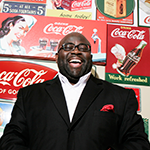Going in-house is a move with rewards and sacrifices for any discipline. For a CIO, the trade-off often means using technology to grease the corporate gears at the expense of pet projects and cutting-edge innovations. Tim Elkins is uninterested in just keeping the lights on, and at PrimeLending, he’s found a way—actually scheduled it once a week—to do much more than that.
We hear about companies like Google where the best innovations come from pet projects, yet CIOs are often bogged down by corporate maintenance. How do you make time for innovation?
As CIOs, we all have those innovative projects we want to work on, but for many of my peers, they always seem to be number three on the list of priorities. They get pushed back by compliance and regulatory projects. I would argue that the reason for that reshuffling is that they haven’t made the business case for innovation. A lot of people in the tech space have great ideas but don’t know how to convey them.
How do you sell a technology initiative?
I create a business vision. I block time in my calendar for about three hours each week to step back and ultimately create a walk-through of what our company will look like three to five years from now. Often executive leadership wants to see proof that my vision is going to work—that someone else has done it and succeeded. However, I’m trying to sell uncharted territory, so the first-to-market argument is substantial. A lot of CIOs will focus on the faster, cheaper, more efficient solutions. That’s one way to the bottom line, but the other way is on the offensive.
How do you decide when to develop a solution in-house and when to look for it off the shelf?
I want my team—as should every progressive CIO—working on things that separate us from the competition. If I can outsource e-mail, why not? We won’t be measured as a great technology department because we had a great e-mail system. We will be evaluated on the work we do that advances the business. With our signature solution, PrimeCloud, my team is working on everything that is innovative about loan origination systems, which are traditionally very close in terms of competitive advantage. By focusing on that, we’ve created a solution that has streamlined many processes, which has provided greater transparency and enabled us for future growth.
PrimeCloud has the potential to bring a lot of change to both your company and the industry. Is it within the realm of IT to play a part in change management when changes in technology are involved?
When we began implementing PrimeCloud, in my mind, everything was going fine. I had a vision of where we were headed but failed to realize that I was the only one who could see the big picture. We had an off-site, and the first half of the day people talked only about how poorly they thought the transition was going. The idea came up to kill the project altogether. I was surprised. I had become so wrapped up in the execution that I lost sight of the difficulties they were facing. I drew out the future on my notepad—the sheet is literally framed in my office—and said, ‘Look, I understand how tough this is, but if we can get through it, we’ll have business-intelligence reporting, social media, electronic signature, and more.” Any time you replace a system, especially in a growing company like PrimeLending, it’s disruptive, painful, and there’s a lot of push back. It’s one of the toughest things you’ll do as a CIO.
What’s the biggest IT trend right now, and how do you help your business keep pace?
The big trend is mobility. We think mobile first on everything. On every project we ask ourselves if it needs to be anywhere other than on a mobile platform, and we’re finding more often than not that mobile is enough in many cases. We have something internally we call our “TechnoFesto”—like the manifesto of the technology department. One of the key ideas in it is to be bold in our creativity. We want to be innovators who provide leading edge solutions. That comes from an environment that fosters creativity and input. When you enable everyone to contribute ideas, that’s where the magic happens.















